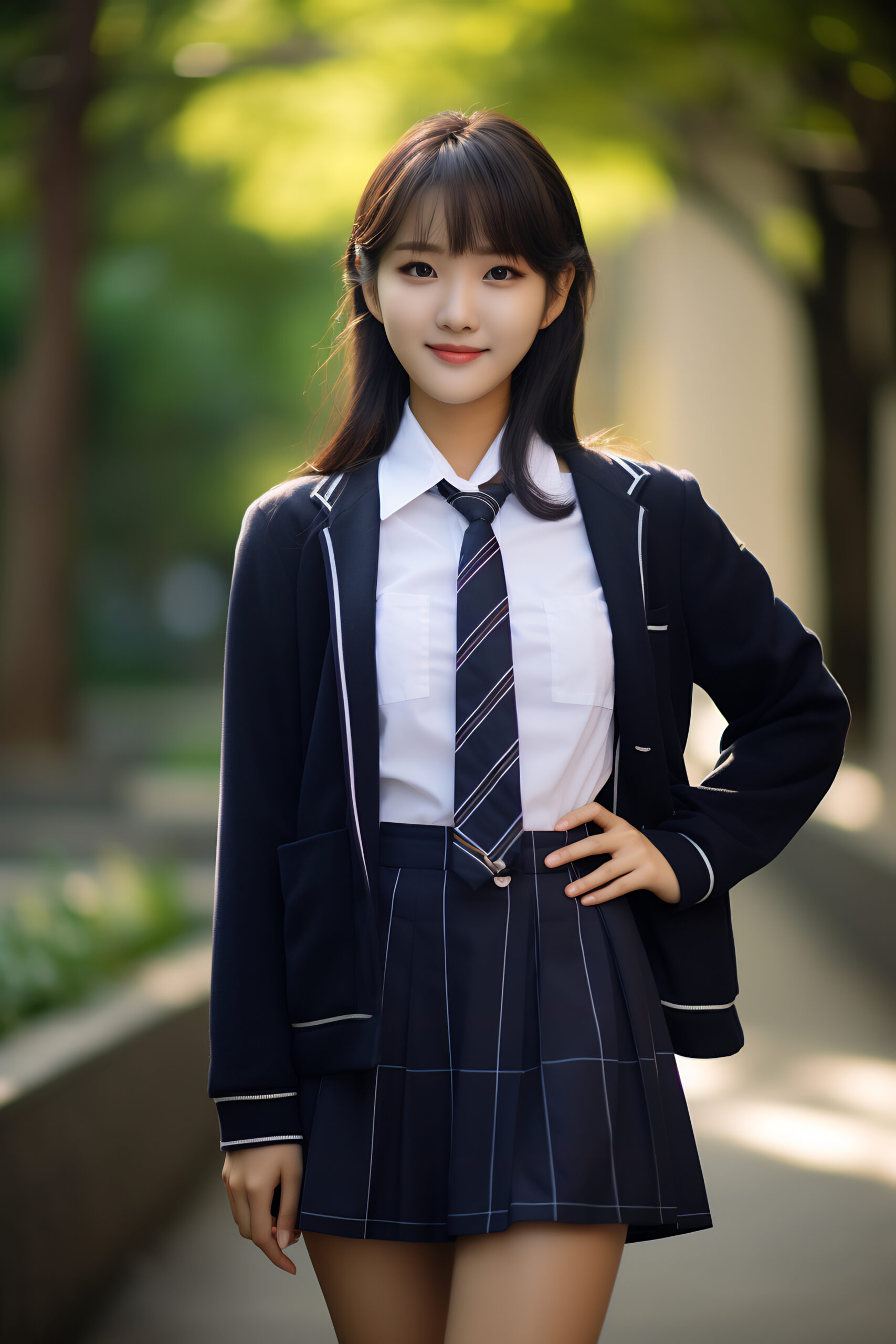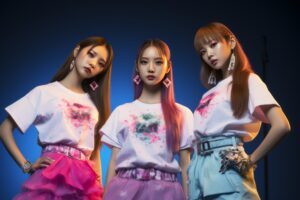In the intricate tapestry of Japanese culture, school uniforms play a pivotal role, symbolizing not just discipline and unity but also evolving as a reflection of societal changes over time. From their origins in the Meiji era to their iconic status in contemporary fashion and pop culture, Japanese school attire has undergone significant transformations. This article delves into the evolution of these garments, tracing their journey from traditional to modern, exploring governmental regulations, and highlighting their cultural impact both domestically and internationally.
Tracing the Roots: Japan’s School Attire Origins
The genesis of Japanese school uniforms can be traced back to the late 19th century when Japan was undergoing a period of rapid modernization. Inspired by Western dress codes, the Japanese education system began to incorporate uniforms as a means of instilling discipline and a sense of belonging among students. The early versions of these uniforms were heavily influenced by European military attire, reflecting Japan’s ambition to emulate the West’s technological and military advancements. This period marked the beginning of a long-standing tradition that would continuously evolve, mirroring the changes in Japanese society.
Meiji Era: The Dawn of Uniformity in Education
The Meiji era (1868-1912) heralded significant transformations in Japanese society, with education reform being a focal point. The introduction of a unified educational system came with the adoption of school uniforms, marking a departure from the traditional attire worn by students. These uniforms were not merely garments but symbols of Japan’s commitment to modernization and equality. They represented a break from the past, aligning with the Meiji government’s broader goals of fostering a sense of national identity and unity among its citizens.
Sailor Suits and Military Drills: Pre-war Fashion
By the early 20th century, Japanese school uniforms had begun to take on a more distinctive shape. The sailor suit, introduced for girls, drew inspiration from the naval uniforms of Europe, becoming a staple of Japanese school fashion. For boys, the military-style attire underscored the importance placed on discipline and physical fitness, reflecting the country’s growing militaristic ethos. These uniforms not only served practical purposes but also reinforced the societal values and aspirations of the time, blending aesthetic appeal with national ideology.
Post-war Shifts: American Influence on Schoolwear
The aftermath of World War II saw significant American influence on Japanese culture, including education and school attire. As Japan embarked on a path to recovery and renewal, the American model of casual wear began to permeate the design of school uniforms, marking a shift towards a more relaxed style. This period witnessed the gradual softening of the militaristic elements of school attire, aligning with the broader societal move towards peace and democratization. The adoption of blazers and slacks for boys, and skirts and blouses for girls, signified a new era in school fashion, blending comfort with formality.
The Gakuran and Sailor Fuku: Symbols of Youth
The gakuran and sailor fuku have become iconic symbols of Japanese youth, transcending their functional roles to become cultural phenomena. The gakuran, with its stand-up collar and black hue, conveys a sense of stoic discipline, while the sailor fuku, with its nautical flair, evokes an air of youthful innocence. These uniforms have been immortalized in manga and anime, becoming a staple of Japanese pop culture. They signify not just the students’ identity but also a phase of life filled with possibilities, challenges, and the universal experience of adolescence.
Rebellion and Individualism: The 1980s Makeover
The 1980s marked a turning point in the evolution of Japanese school uniforms, with students beginning to assert their individuality through modifications to their attire. Shortening skirts, altering the fit, and adding personal touches became common practices, reflecting the broader cultural shift towards self-expression and rebellion against conformity. This period highlighted the tension between tradition and modernity, with school attire becoming a canvas for youth to express their burgeoning sense of identity and independence.
Government Stance: Regulations and Reforms
Throughout the evolution of school uniforms, the Japanese government has played a crucial role in regulating school attire through policies and reforms. From strict guidelines ensuring uniformity to recent moves towards relaxing dress codes, the government’s stance has reflected changing societal values and the need for a balance between discipline and individual freedom. The introduction of gender-neutral uniforms and the allowance for more personal expression signify a progressive shift, accommodating diversity and promoting a more inclusive school environment.
Modern Trends: Comfort Meets Tradition
Today, Japanese school uniforms are a blend of comfort and tradition, with designs that prioritize both aesthetic appeal and practicality. Recent trends include the adoption of breathable fabrics, adjustable sizes, and more relaxed fits, catering to the contemporary student’s desire for comfort without forsaking the traditional elegance of Japanese school attire. These modifications demonstrate the adaptability of school uniforms to meet the evolving needs and preferences of students, ensuring that this enduring tradition remains relevant in modern society.
International Spotlight: Japanese Uniforms Abroad
Japanese school uniforms have garnered international fame, becoming emblematic of the country’s cultural export. Through the global spread of Japanese media, the distinctive styles of the gakuran and sailor fuku have captivated audiences worldwide, inspiring fashion trends and cosplay activities. This fascination with Japanese school attire underscores the cultural influence of Japan’s educational traditions, bridging cultural divides and fostering a global appreciation for its aesthetic and symbolic significance.
Beyond the Classroom: Cultural Impact of School Attire
The impact of Japanese school uniforms extends far beyond the classroom, influencing fashion, media, and social norms. As a subject of fascination and emulation, these uniforms have inspired a myriad of fashion subcultures and artistic expressions, reflecting the profound cultural resonance of this sartorial tradition. They encapsulate the essence of youth and the complexities of growing up, making them a perennial source of inspiration for creatives and designers alike.
Sustainability in School Fashion: A New Chapter
In response to growing environmental concerns, the realm of Japanese school fashion is embracing sustainability. Initiatives to recycle uniforms, use eco-friendly materials, and implement uniform rental programs are gaining traction, reflecting a conscientious shift towards more sustainable practices. This new chapter in the evolution of school attire not only addresses environmental issues but also promotes social responsibility, marking a significant step forward in the sustainable development of school fashion.
The Future of Uniformity: Innovations and Integrations
Looking ahead, the future of Japanese school uniforms is poised for further innovation and integration. With advancements in technology and a growing emphasis on inclusivity and sustainability, school attire is set to evolve in ways that cater to the diverse needs of students while preserving its cultural heritage. Whether through smart fabrics, customizable designs, or environmentally friendly materials, the next generation of school uniforms will undoubtedly reflect the dynamic interplay between tradition and progress, symbolizing the ongoing transformation of Japanese education and society.
The evolution of Japanese school uniforms from their Meiji era origins to their status as modern cultural icons encapsulates the broader narratives of societal change, national identity, and youth expression. As these garments adapt to the demands of contemporary life and the challenges of the future, they continue to serve as a testament to the enduring spirit of innovation and tradition that characterizes Japanese culture. Beyond mere attire, Japanese school uniforms embody a complex interplay of history, fashion, and social values, offering a fascinating window into the heart of Japan’s educational and cultural ethos.








